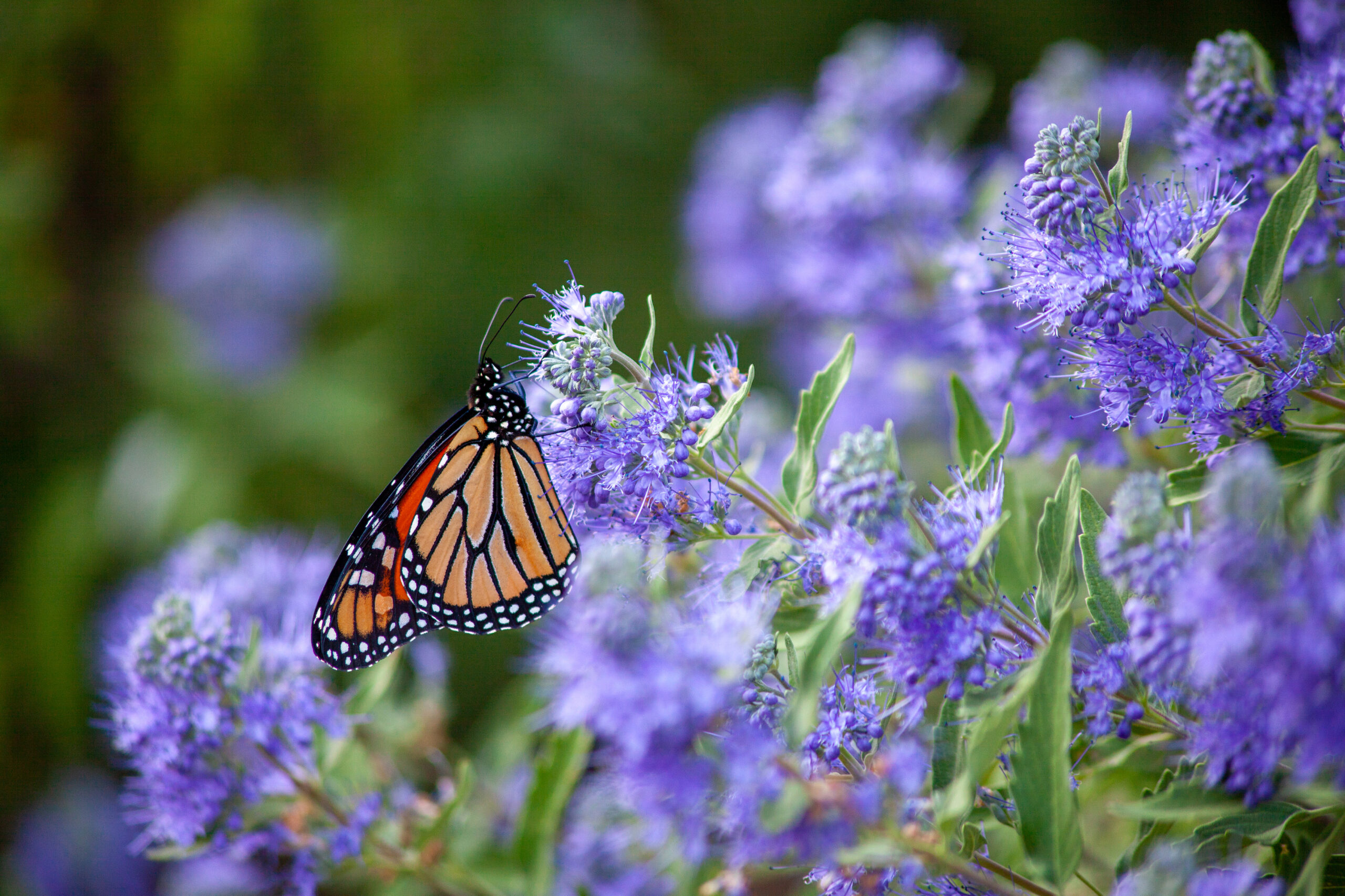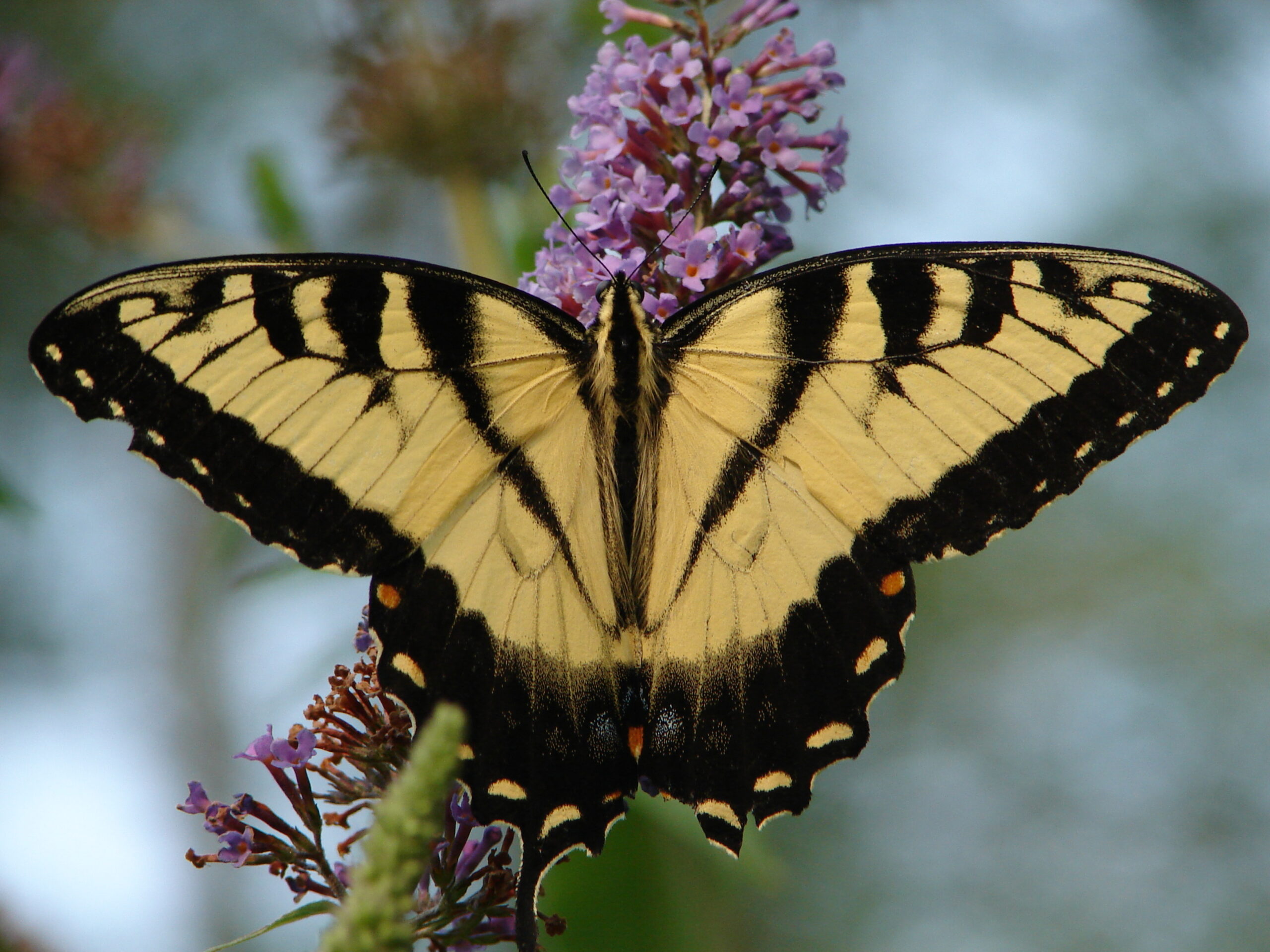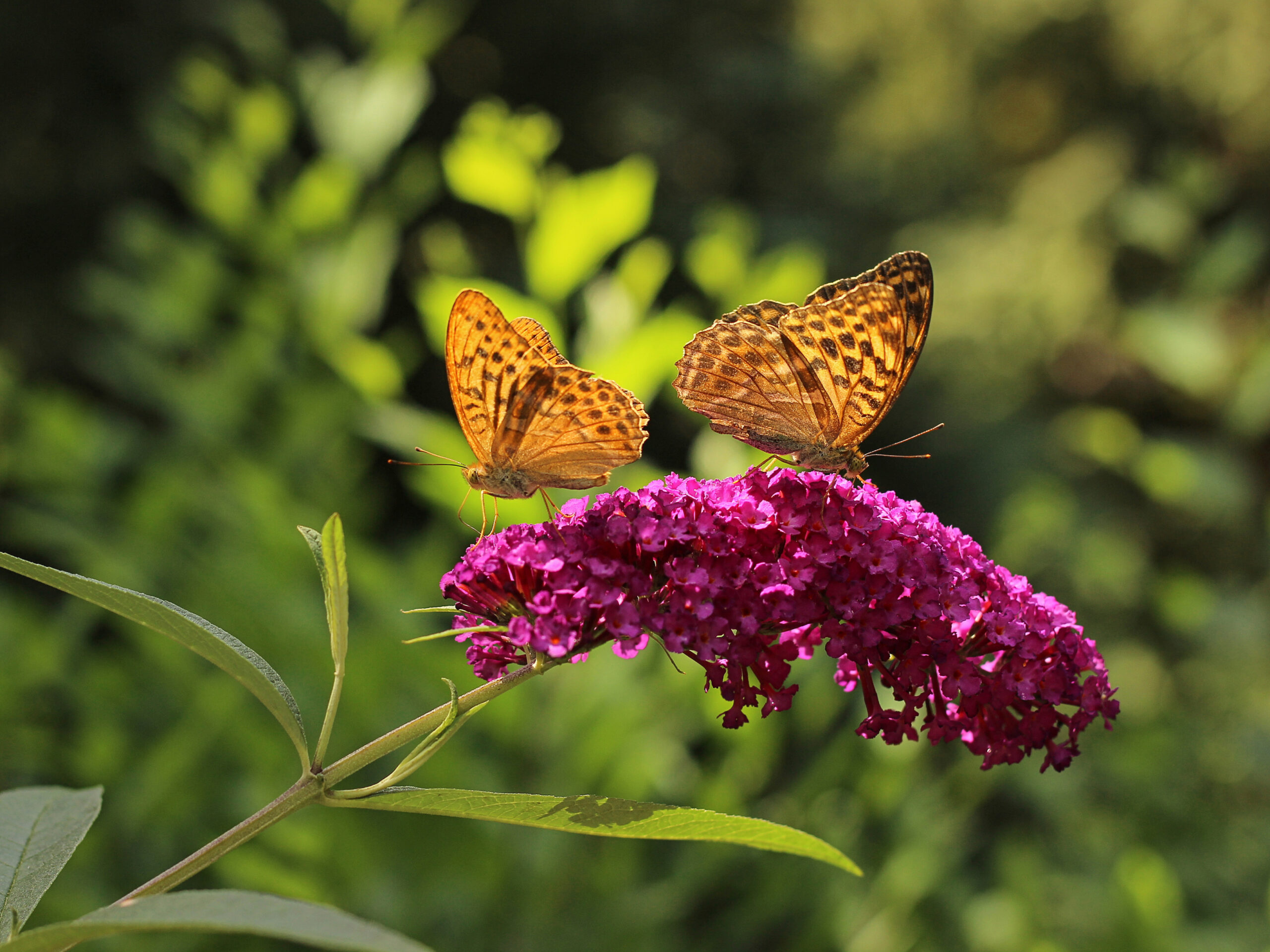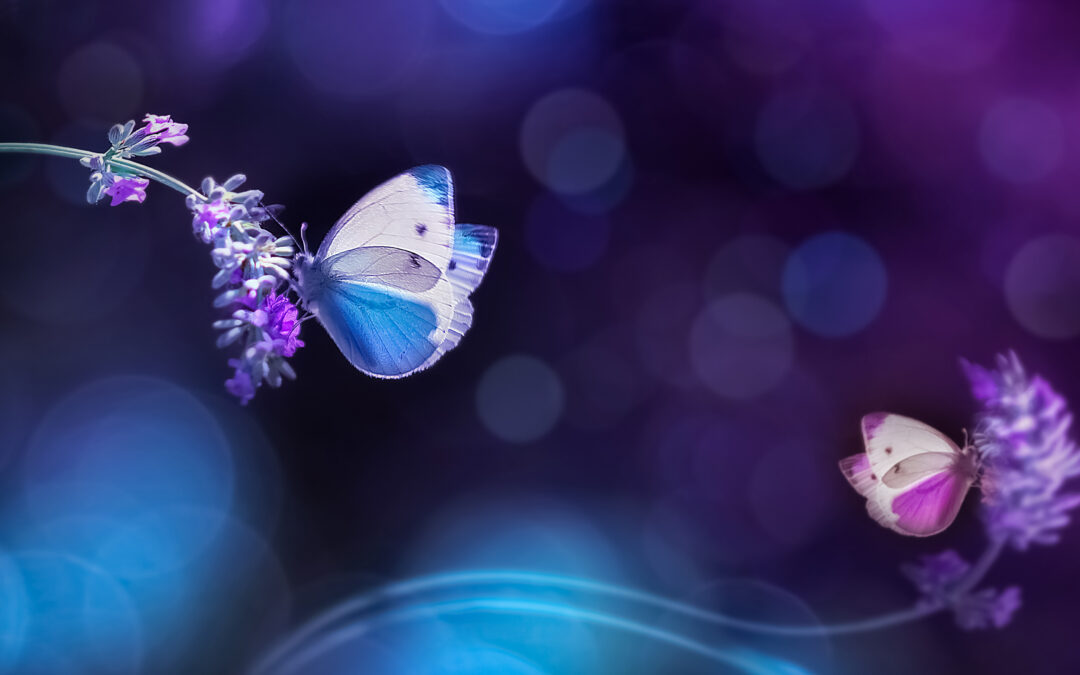==================
A Caveat and Affiliates
First off, a little caveat: within my articles you will find affiliate links, meaning if you buy them, I get a small commission. Your cost is not affected. In addition, I am an Amazon Associate and I earn from qualifying purchases on Amazon.
And yes, if I say that I recommend a product here, it means I truly believe it is a good product. I refuse to recommend any product that I have not researched and believe to be a good value.
Even better, I provide you with a very clear picture of the product, it’s use, and the probable value.
Earning your trust is important to me. I run this website myself and the commissions and donations help support the site.
Sound reasonable and fair enough? Let’s continue to the article.
==================
Looking for ways to infuse lots of colors into your backyard? Plant butterfly bushes and attract hundreds of pollinators!
Although we hate seeing caterpillars eating our favorite plants, without them, we wouldn’t be able to see butterflies in our backyards. In addition to injecting colors and beauty and offering the sight of the delicate, butterflies are also essential for the environment.

Plant Butterfly Bushes
Besides being essential pollinators, these jewel insects impact the whole environment. Unfortunately, their prosperity is increasingly compromised, mainly due to habitat loss, deforestation, and the widespread use of pesticides.
However, butterfly bushes for the backyard are one of the effective ways to conserve these beautiful insects and let native plants perpetuate. Here’s why butterflies are important and why you should plant butterfly bushes in your garden.
Butterflies Pollinate Plants
Plant plenty of butterfly bushes to make it look more aesthetic. Butterflies are attracted to flowers and bushes that offer nectar. So, butterfly bushes for the backyard mean these jewel insects collect pollen from them and then transport it to other plants. As a result, you will have better production of fruits, veggies, and flowers. It is worth noting that pollinators like bees and butterflies are essential for the majority of houseplants to reproduce.
Healthy Environment
In addition to attracting butterflies, butterfly bushes for the backyard also help you attract other native birds and bees. All these creatures are great for the whole environment and play a key role in promoting biodiversity. You will have a diverse ecosystem where various plants, birds, and pollinators will live in harmony.

However, you should also remember that butterflies are a low-level food source as wild creatures like spiders, birds, mice, lizards, etc., eat them. So, if their population diminishes, the impact will be disastrous and can affect the whole environment.
Moreover, since butterflies are so delicate and sensitive to environmental fluctuations, they are also a scientific source for observing the effects of climate change and habitat fragmentation.
Butterflies Make Us Happy
According to studies, surrounding yourself with nature and even just looking at butterflies in your backyard is beneficial for mental health. So, spending a few treasurable moments while watching a colorful peacock butterfly or a delicate red admiral will bring great pleasure.
Why Should You Plant Butterfly Bushes in Your Garden?
Plenty of butterfly bushes for the backyard come with the sheer power of blooms. While many species love flirting with the sun, butterfly bushes are also among the plants with some of the longest-blooming cycles. In addition, they are also available in an array of colors with flowers that blooms continuously. These beautiful plants bring flocks of hummingbirds and pollinators to your garden. Here are a few reasons you should plant butterfly bushes in your backyard.
-
They Attract Butterflies and Other Pollinators
According to professional gardeners, planting butterfly bushes are one of the easiest ways to attract flocks of butterflies, birds, and other pollinators to your garden. Butterflies are attracted to these plants because they have blooms high in nectar.
-
Easy to Plant and Care for
Whether you are a newbie gardener looking for easy-to-grow plants or someone who want to attract birds and butterflies to your garden, butterfly bushes are ideal. These flowering plants are drought-tolerant, produce long-lasting blooms, and can bear infrequent watering practices. However, good gardening soil is all you need to keep your butterfly bushes thriving.
-
Different Colors and Varieties
With a plethora of colors and varieties, it is hard to beat butterfly bushes. You can find them in almost every size in nurseries and purchase the one that suits your garden space. These plants can stand alone in your garden or add them to your flower beds.

So, which varieties of butterfly bushes for the backyard are perfect?
Top 8 Butterfly Bushes for Backyard
Here are our favorite butterfly bushes you can grow in your backyard to attract flocks of butterflies and other pollinators.
1. Buddleia Lo & BEOHOLD Blue Chip Jr. Butterfly Bush

Blue Chip Jr.
Hate growing large flowering shrubs? Buddleia Lo & BEHOLD is an ideal pick for you. The plant is a genus of species comprising shrubs, trees, and climbers. They are native to North and South America, Asia, and Africa and are considered one of the best butterfly bushes for backyards.
Buddleia Lo & BEHOLD is among miniature butterfly bushes that you can grow even in small garden places to attract pollinators. In addition, to ease of care and offering fragrance-like traditional varieties, Buddleia is like a magnet and can attract flocks of butterflies, hummingbirds, and other pollinators to your landscape.
Moreover, these plants produce show-stopping blooms in summer through early fall, when only a few other shrubs have flowers. You can grow Buddleia as border plants, cottage gardens, or a stunning butterfly garden. In addition, they are also small enough so you can use them as flower beds in containers.
Care Tips
- Grow in well-draining, medium-moisture soil in full sun.
- Avoid growing your plant in wet, poorly draining soils.
- Ensure to remove spent flower spikes in the growing season, which will encourage superior blooms.
- As an easy-growing plant, Buddleia doesn’t require pruning.
2. Miss Molly Butterfly Bush (Summer Lilac)

Miss Molly
Compact, low-maintenance, and tidy, Miss Molly or Summer Lilac is among the most elegant butterfly bushes for backyards. With an uncluttered, rounded growing habit, this plant is a perfect pick for summer gardens of any size. In addition to striking purely red blooms or dark purple flowers and distinctive fragrances, Miss Molly can attract flocks of delicate pollinators like butterflies, hummingbirds, and bees to your garden.
Moreover, this plant is also non-invasive and loves to soak in full sun. The bloom season is also remarkable, with flowers that last for months without deadheading. From spring through late fall, Summer Lilac produces stunning flowers, so you enjoy its fresh fragrance while watching flocks of butterflies fluttering around.
Care Tips
- Summer Lilac thrives in full sun with at least six-hour suns daily.
- Since Miss Molly’s roots are susceptible to rot, plant them in well-draining soil.
- The best season to plant it is from spring to mid-summer. So, avoid planting it in the fall.
- As an easy-growing butterfly shrub, your Miss Lilac needs average watering.
- Occasional pruning in early spring is beneficial.
3. Lilac Chip Butterfly Bush
 Lilac Chip
Lilac Chip
Presenting a new dwarf Buddleia hybrid, Lilac Chip is a compact, stunning butterfly bush that produces plenty of incredibly fragrant panicles of flowers. Lilac Chip is exceptionally drought-tolerant compared to traditional cultivars and far more compact than the Blue Chip butterfly bush. In addition, it also strikes a unique, denser foliage featuring extremely fragrant pink flowers.
One of the chief selling points of this stunning butterfly bush is its non-invasiveness characteristic. Because of its miniature stature, it is an excellent addition to small landscapes and can be raised in containers. Moreover, like most other butterfly shrubs for the backyard on this list, it is also an easy-to-grow option and doesn’t require much attention.
Furthermore, one of the fantastic points of planting Lilac Chip is it blossoms in the latter half of the growing season and displays fall flowers at a time when only a few other shrubs have blooms. So planting it in your garden means you can extend the bloom sequence and attract more butterflies and pollinators to your backyard.
Care Tips
-
- Like other butterfly bushes on this list, Blue Chip also needs full sun to thrive.
- You don’t need to deadhead spent flowers.
- Try to plant it in slightly acidic soil with excellent drainage.
- Water your Buddleia well during its establishing phase. Once established, it needs moderate watering.
4. Ice Chip Butterfly Bush

Ice Chip Butter
Unlike most butterfly bush species that can overgrow and occupy all the available space in your garden, Ice Chip is a versatile, compact, dwarf, and easy-to-grow bush that doesn’t need much space to thrive. Striking spectacular silver-green foliage and fragrant white flowers, you are guaranteed to attract hundreds of butterflies, hummingbirds, and other pollinators to your landscape.
Moreover, as a low spreading perennial, the plant is also suitable for use as a flowering bed. The variety is versatile, sterile, and has a remarkable blooming cycle with no deadheads. In addition, its neat, mounded form growing habit and minimal maintenance make Ice Chip a perfect plant for novice gardeners.
Care Tips
- Average, well-draining soils will let you enjoy a long blooming season.
- Full sun is essential for getting the optimum result and denser flowering.
- Avoid planting it in wet soil, as the roots are susceptible to developing root rot.
- Your plant needs consistent watering during its initial planting phase.
5. Purple Haze Butterfly Bush

Purple Haze
Prized for its fast growth, low maintenance, and purple panicles, Purple Haze is a well-known butterfly bush among gardening enthusiasts worldwide. It produces green leaves and can liven up any landscape and garden. As a compact grower, it lets its branches extend to the grown and produce spectacular blooms in late summer through fall.
Whether you plant it in a mass, container, or on your patio, Purple Haze can attract groups of pollinators, including hummingbirds and bees. In addition to its ease of care, the plant doesn’t produce any unnecessary seedlings, making it an excellent pick for inexperienced gardeners.
You can plant Purple Haze as flower beds and borders or use it for landscaping in a hedge. It is also incredibly drought tolerant and animals, so worry not if any of them come along.
Care Tips
- Purple Haze is among fairly easy-to-plant butterfly bushes when it comes to watering. Once a week is an idea, but you should increase frequency during hot environments.
- Good drainage is critical to prevent root rot. Ideally, you should plant it in soil with loam, clay, sand, and high organic matter.
- Like other butterfly bushes on this list, Purple Haze also needs full sun for better blooming.
6. Tutti Fruitti Butterfly Bush

A cultivar of the Buddleia davidii, Tutti Fruitti is a native to China. It strikes graceful arching branches loaded with fuzzy, lance-shaped, grey-green leaves and mesmerizingly fragrant panicles of bright pink flowers. As one of the supreme butterfly bushes for the backyard, Tutti Fruitti has nectar-rich flowers and seduce various pollinators, including hummingbirds, butterflies, and bees.
Moreover, the plant is also prized for its stunning bright pink flowers that last from summer to fall – sometimes till the first frost. In addition, easy care and minimal maintenance make it a perfect option for novice gardeners and landscapers, and it can be grown in various soils.
In addition to mass and container planting, you can use these plants as showy ground-covering beds due to their compact and spreading growth. They are bred sterile, produce no unwanted seedlings, and are non-invasive.
Care Tips
- As a sun-loving butterfly bush, Tutti Fruitti can be planted in average, moderate moisture and well-draining soils.
- Ensure prompt elimination of spent flower spikes to encourage blooms until the first frost.
- Pruning is not necessary, but if you decide to prune your plant, do so during early to mid-summer.
- Thorough watering is essential during the initial stages. However, you can reduce watering once it is established.
7. Pink Delight Butterfly Bush

Planting butterfly bushes like Pink Delight lets you fill your garden with pollinators like butterflies and hummingbirds. The award-winning deciduous shrub with compact, rounded growing habit features spectacular, nectar-rich elongated pink blooms. Sitting at the tips, the massive flower spikes over 15 inches showcase an incredible display from mid-summer to early fall.
Moreover, excellent for cuttings, it produces blooms when only a few other flowering bushes have flowers. Best grown in cottage gardens, borders, rose gardens, and butterfly and wildlife gardens, Pink Delight could be a stunning addition to your landscape.
Care Tips
- Well-drained soil is crucial to prevent your plant from developing root rot.
- Exposure to full sun will encourage denser and long-lasting flowers.
- While regular watering is beneficial, you should avoid overwatering.
- As a low-maintenance butterfly shrub, it doesn’t necessarily need pruning. But if you decide to prune it, do so in late winter.
8. Honeycomb Butterfly Bush

The honeycomb butterfly bush is one of the unique plants to attract butterflies, hummings, and other pollinators to your backyard. Producing fragrant, clustered yellow blooms, this cultivator injects plenty of visual interest. You can expect your plant to bloom in midsummer through early fall. In addition, Honeycomb’s nectar-rich flowers attract flocks of pollinators.
Moreover, the plant’s deciduous green foliage strikes a perfect backdrop, making these plants an excellent addition for cut flower purposes. However, unlike other butterfly bushes on this list, it can grow quite large. You can also use these plants for mass planting or borders.
Care Tips
- Allow your Honeycomb to get plenty of direct sunlight for optimum results.
- While it can thrive in various types of soils, make sure to plant it in well-drained soil.
- Despite being a drought-tolerant butterfly shrub, it appreciates regular watering.
- You can control your plant size by pruning in early spring or late winter.
Wrapping Up
So, why plant butterfly bushes in your backyard? These jewel insects are more than just adding visual effects to our landscapes. For instance, planting butterfly bushes help sustain plant diversity and lure pollinators and other beneficial insects to our backyards. In addition, butterflies act as a barometer and tell us how the environment is. So, what are your favorite butterfly bushes? Let us know in the comments below.
You Might Also Like the following:
